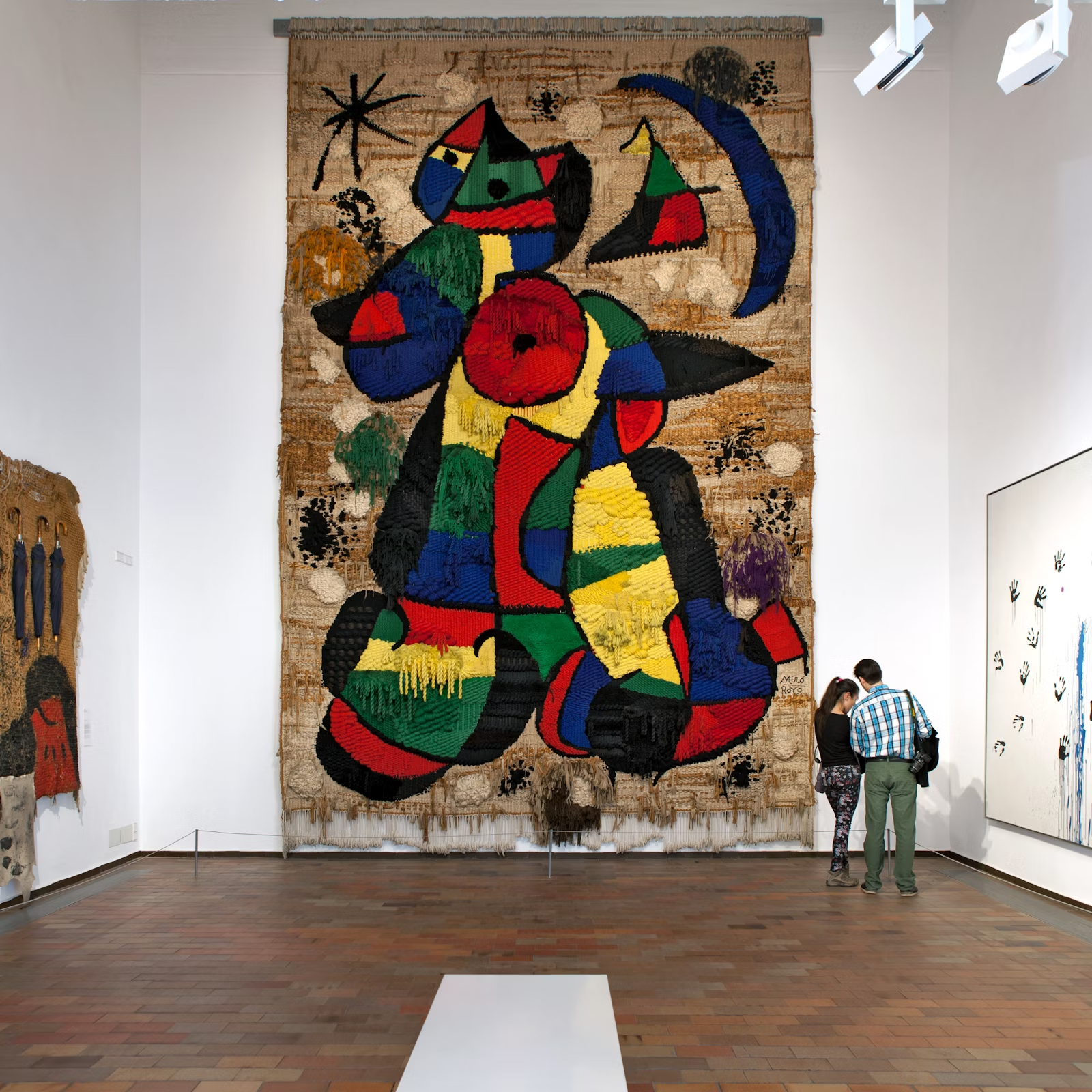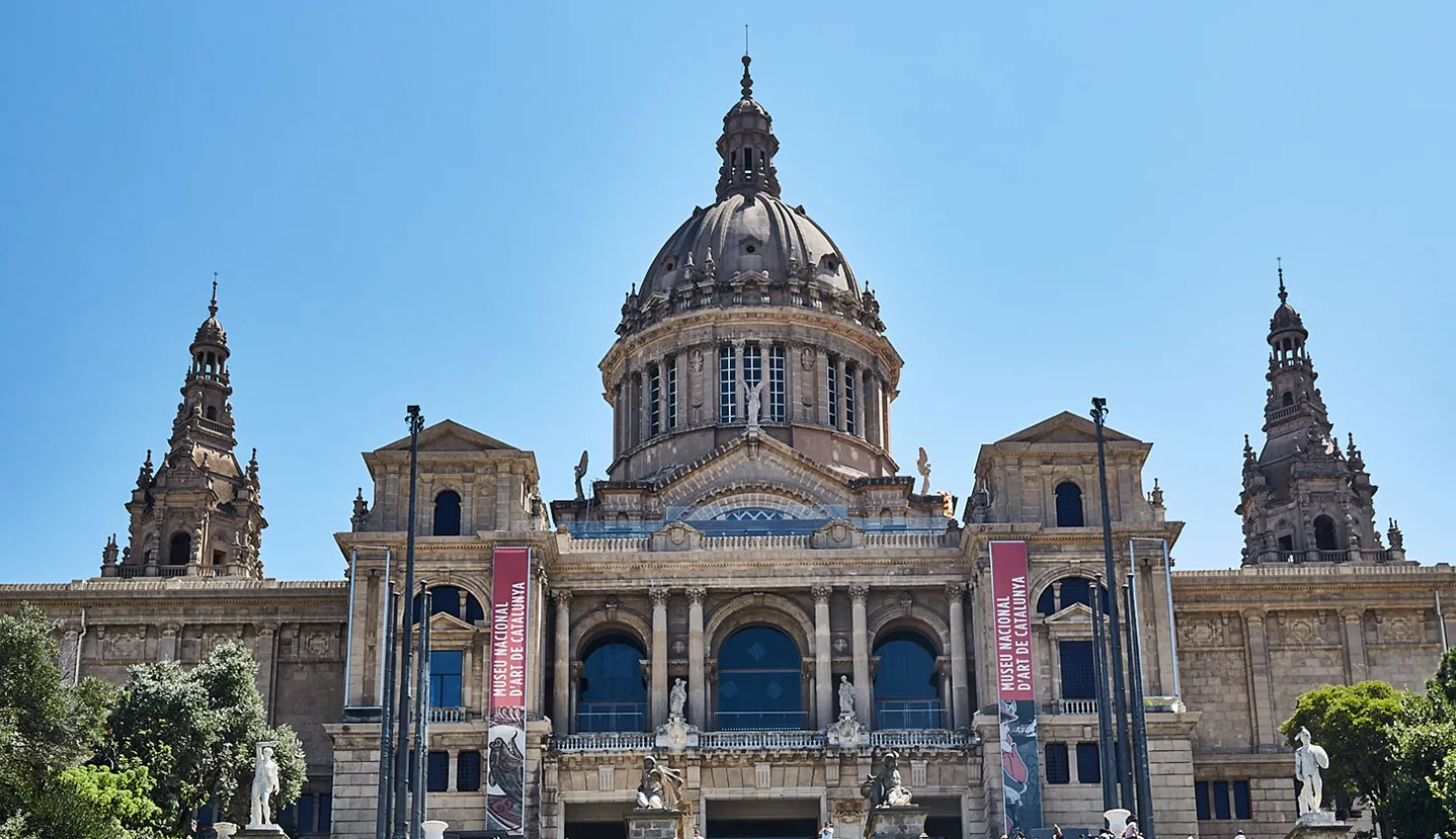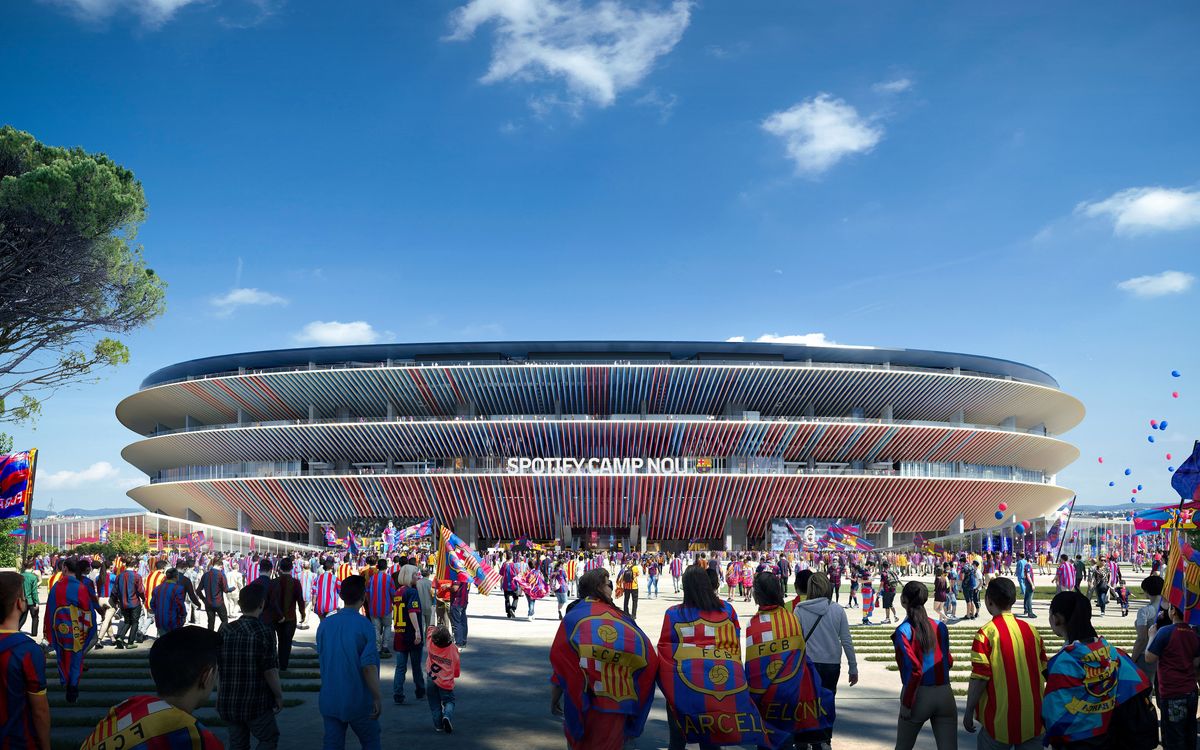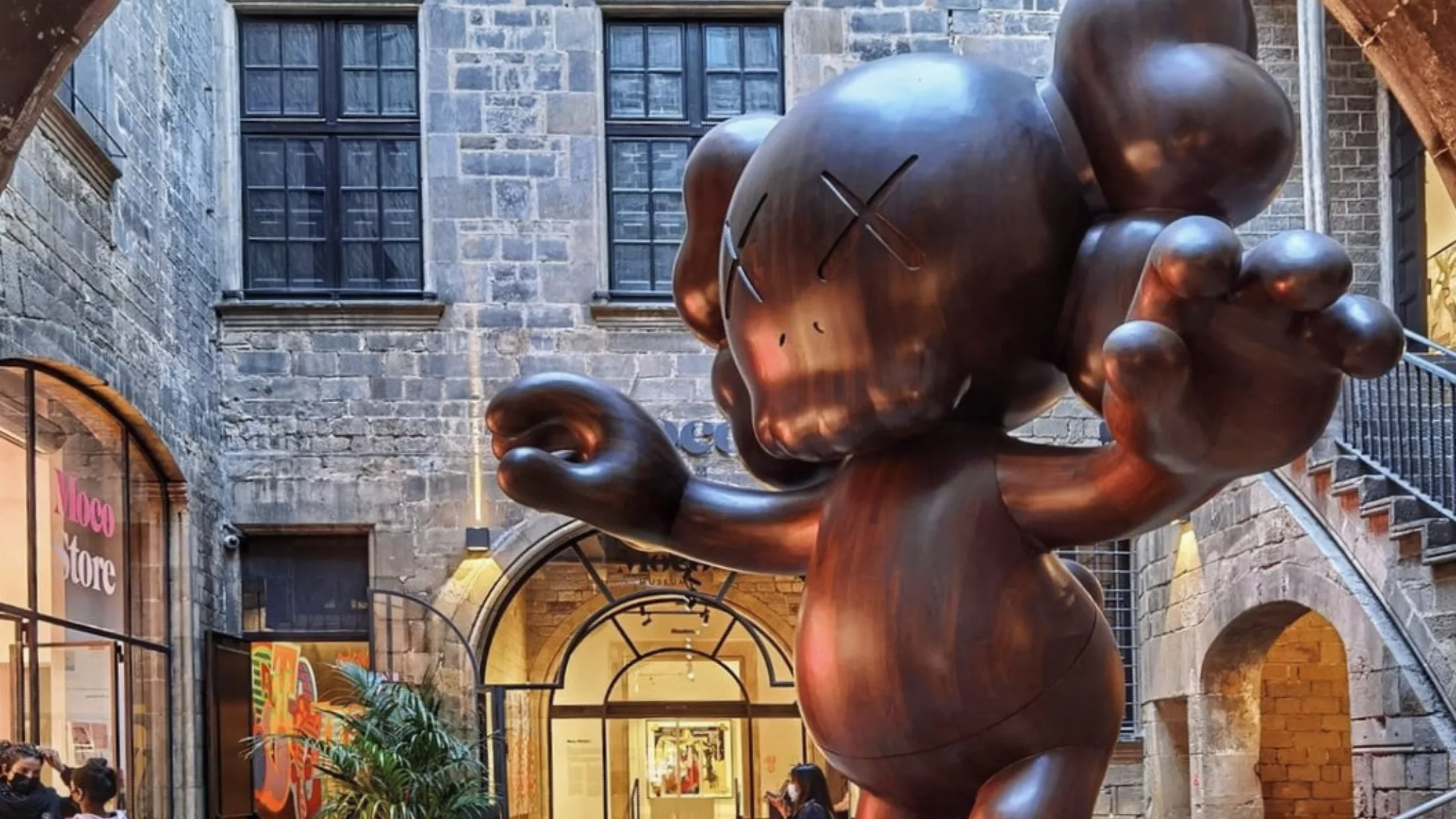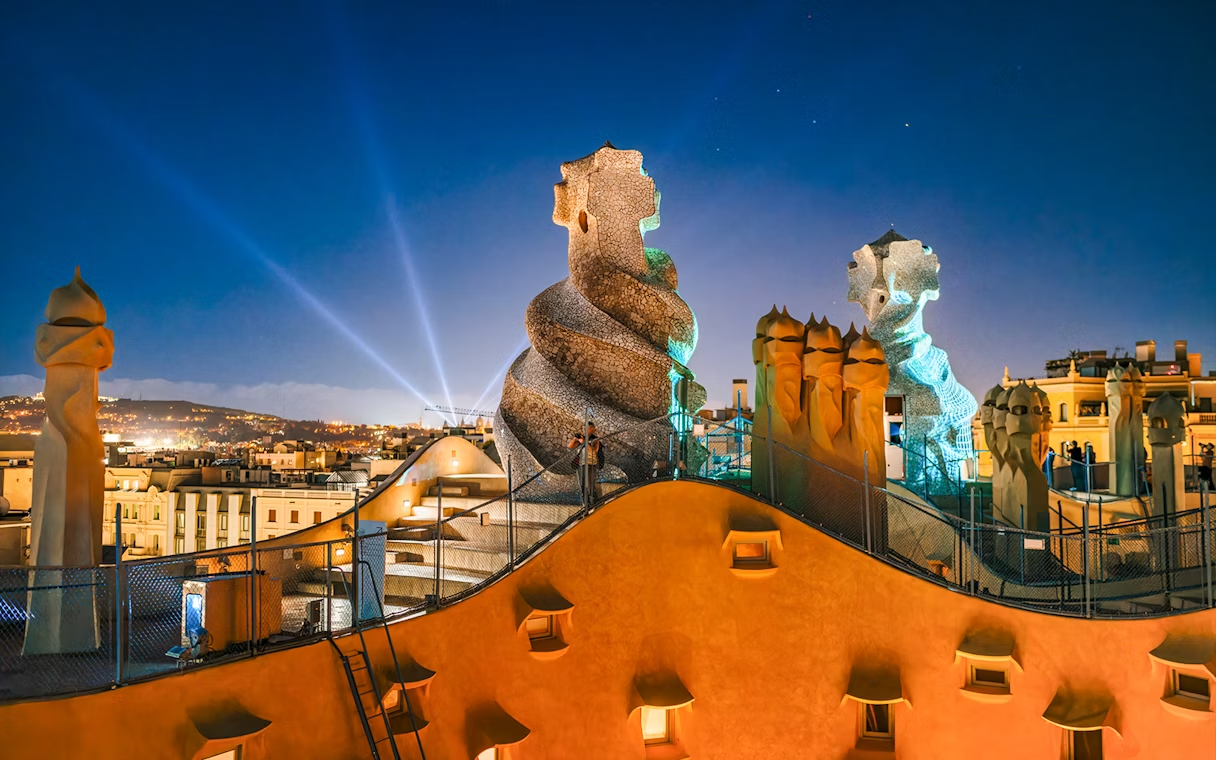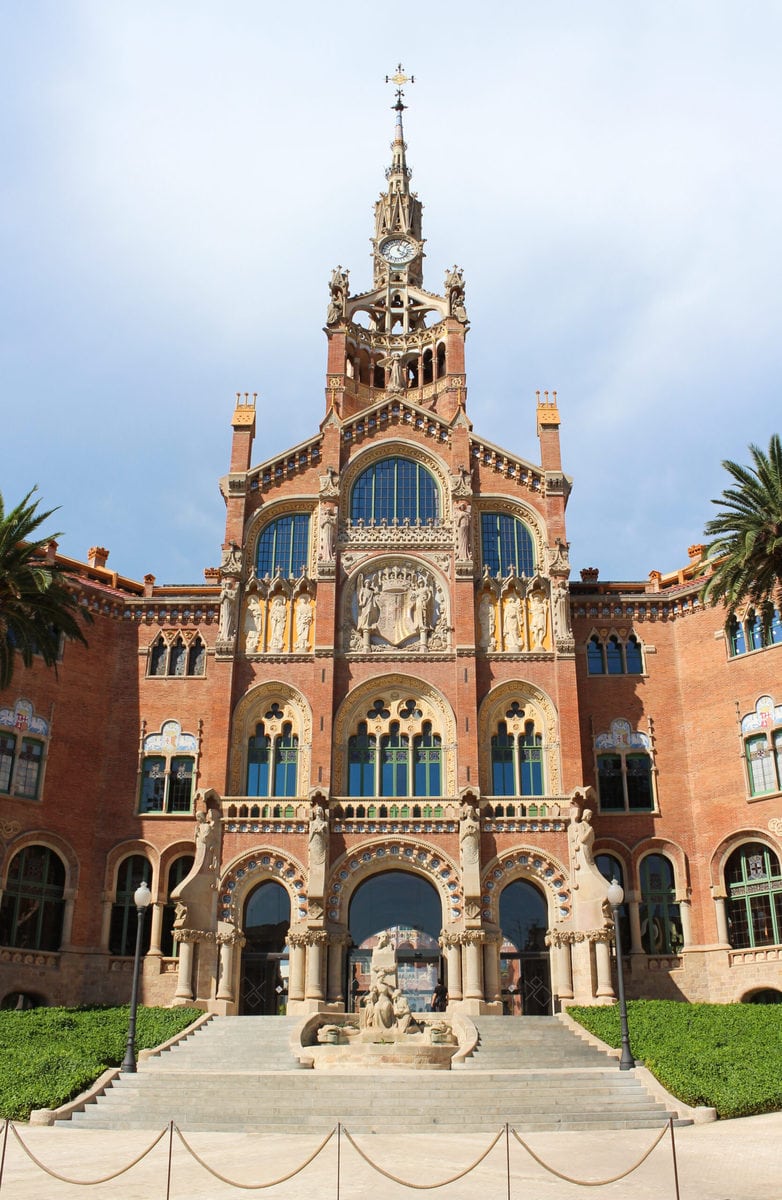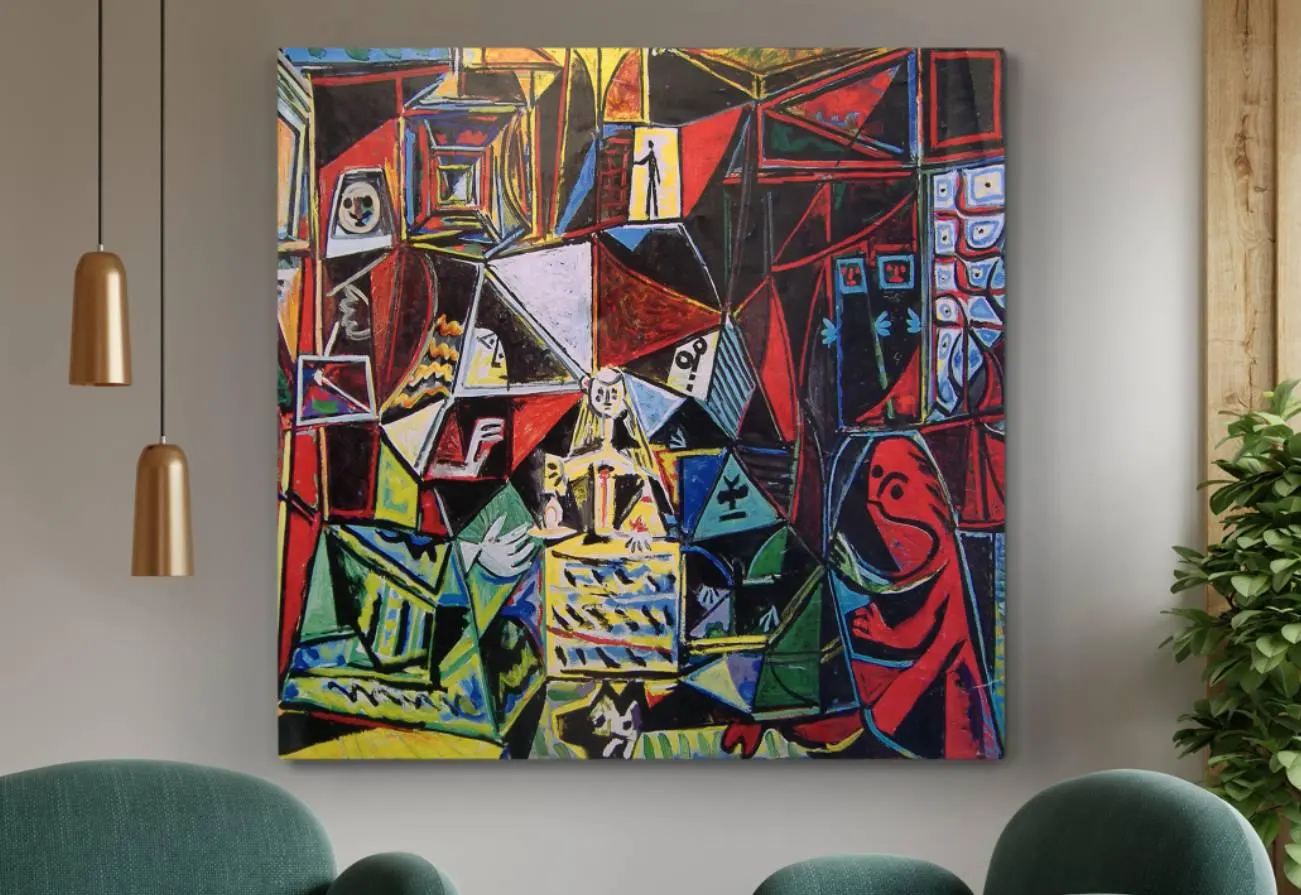What is There to See?
The museum offers one of the most comprehensive collections of Joan Miró’s work, along with a space designed to embody his artistic freedom.
- Permanent Collection: Explore hundreds of paintings, drawings, sculptures, and early sketches by Miró. His signature colors — blue, red, yellow, black — dominate the space, accompanied by strange eyes, birds, and stars. From his early academic works to surreal abstraction, you’ll see the full arc of his development.
- Pavilions and Gardens: There are 12 historic pavilions, each named after a saint. They’re arranged along symmetrical gardens and connected by underground tunnels. You can visit several of them inside and walk between others in the open air.
- Sculpture Garden: On the roof terrace, Miró’s whimsical bronze and ceramic sculptures interact with the Barcelona skyline. This space merges art, architecture, and nature, offering a peaceful moment above the city.
- Tapestries and Murals: The museum houses several of Miró’s monumental works, including large-scale textile pieces, wall murals, and even a stunning bas-relief.
- Espai 13 – Experimental Space: Dedicated to emerging contemporary artists, this gallery within the museum aligns with Miró’s desire to support new talent and challenge norms.
- The Building: Designed by modernist architect Josep Lluís Sert, the museum building is a work of art itself. The interplay of natural light, white walls, and minimalist geometry perfectly complements Miró’s wild imagination.
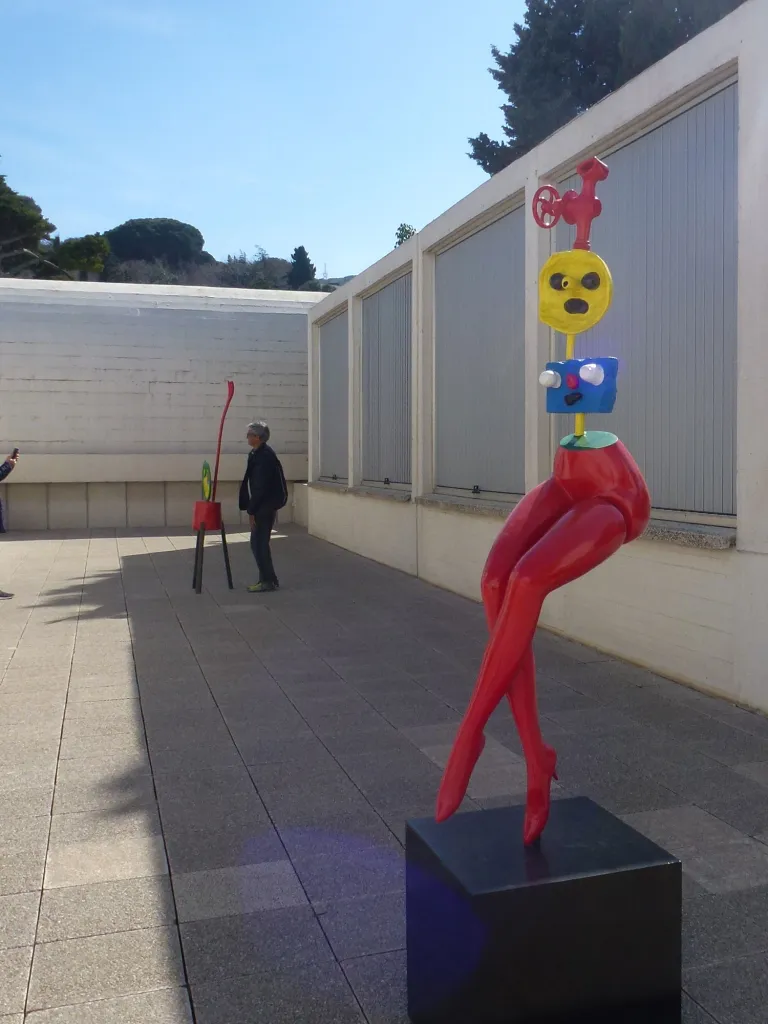
About Joan Miró
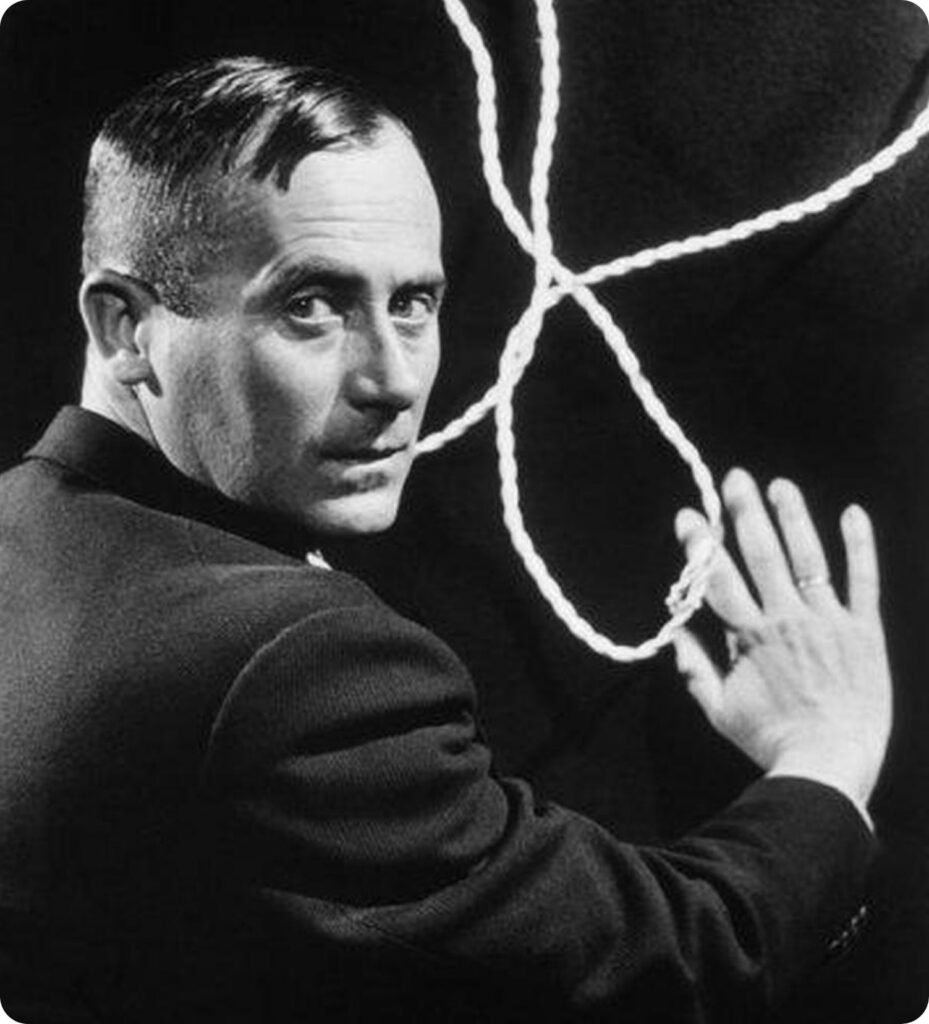
Born in 1893 in Barcelona, Joan Miró was a painter, sculptor, and ceramicist known for his surreal and symbolic style. Though influenced by Cubism, Fauvism, and Dada, Miró developed his own visual language using bold colors, abstract figures, and dreamlike compositions.
Miró’s work was deeply personal and poetic. He drew from Catalan identity, nature, and the subconscious — often using stars, birds, moons, and eyes as recurring symbols.
He lived much of his life in Spain and France and created some of the most iconic surrealist works of the 20th century. Despite his fame, he remained modest and curious, always pushing the limits of form and meaning.
Joan Miró passed away in 1983, but his influence lives on in modern art, children’s books, street murals, and beyond.
A Short History of the Fundació Joan Miró
Joan Miró dreamed of creating a space that would celebrate creative freedom and make art more accessible to everyone. That dream came true in 1975, when the Fundació Joan Miró opened its doors, thanks to his own donations and the help of architect Josep Lluís Sert, a long-time friend.
The foundation began with over 200 works gifted by Miró himself — including paintings, sculptures, sketches, and personal objects. Over the years, the collection has expanded to more than 14,000 items, and the museum has become one of the most visited in Barcelona.
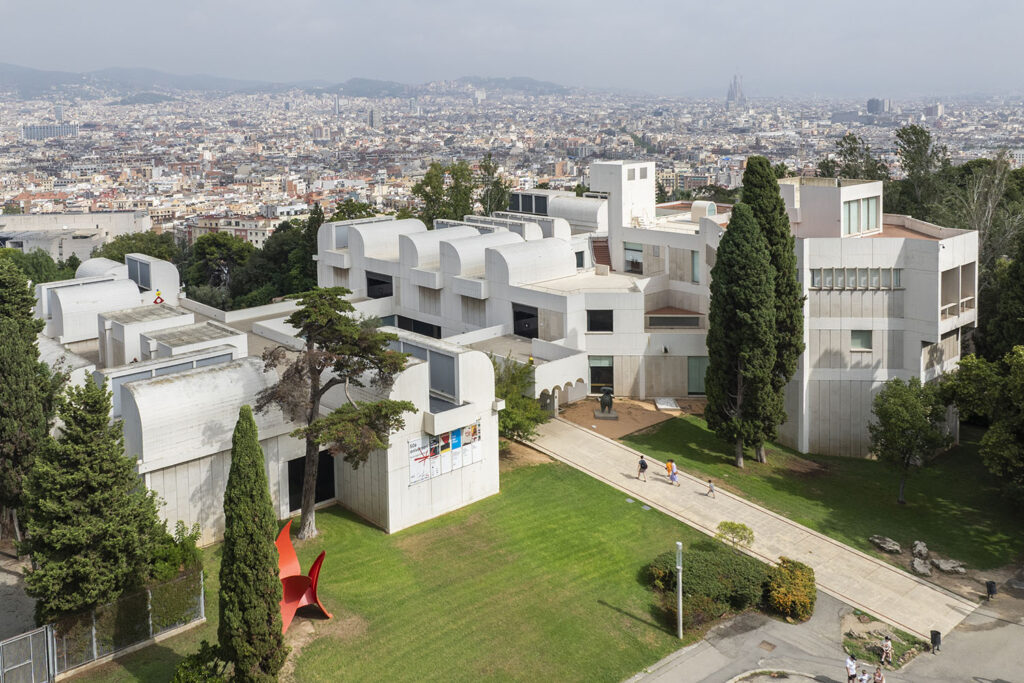
The museum is not just about Miró’s legacy; it also supports experimental and contemporary artists, with exhibitions, workshops, and the Espai 13 gallery dedicated to innovation and boundary-pushing.

